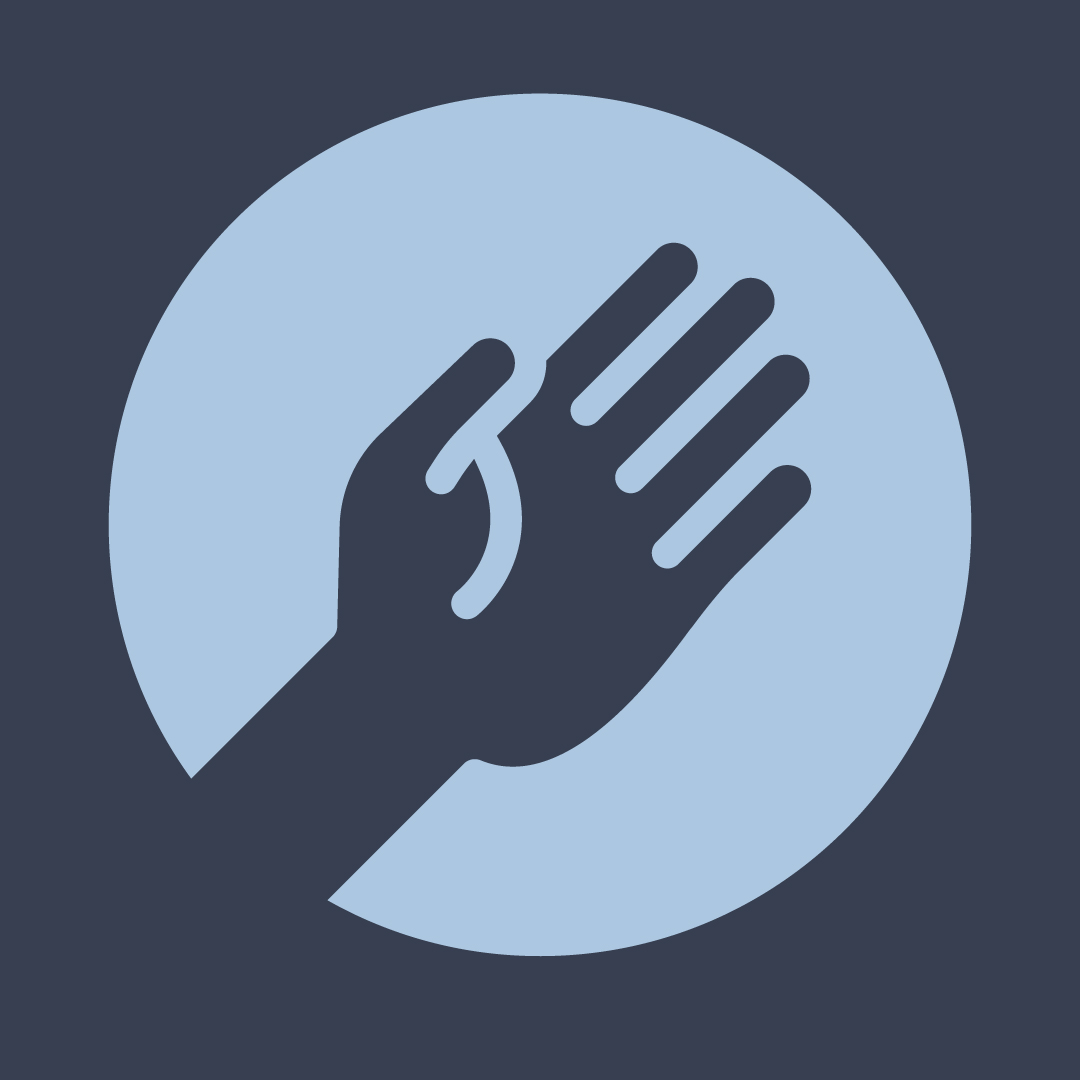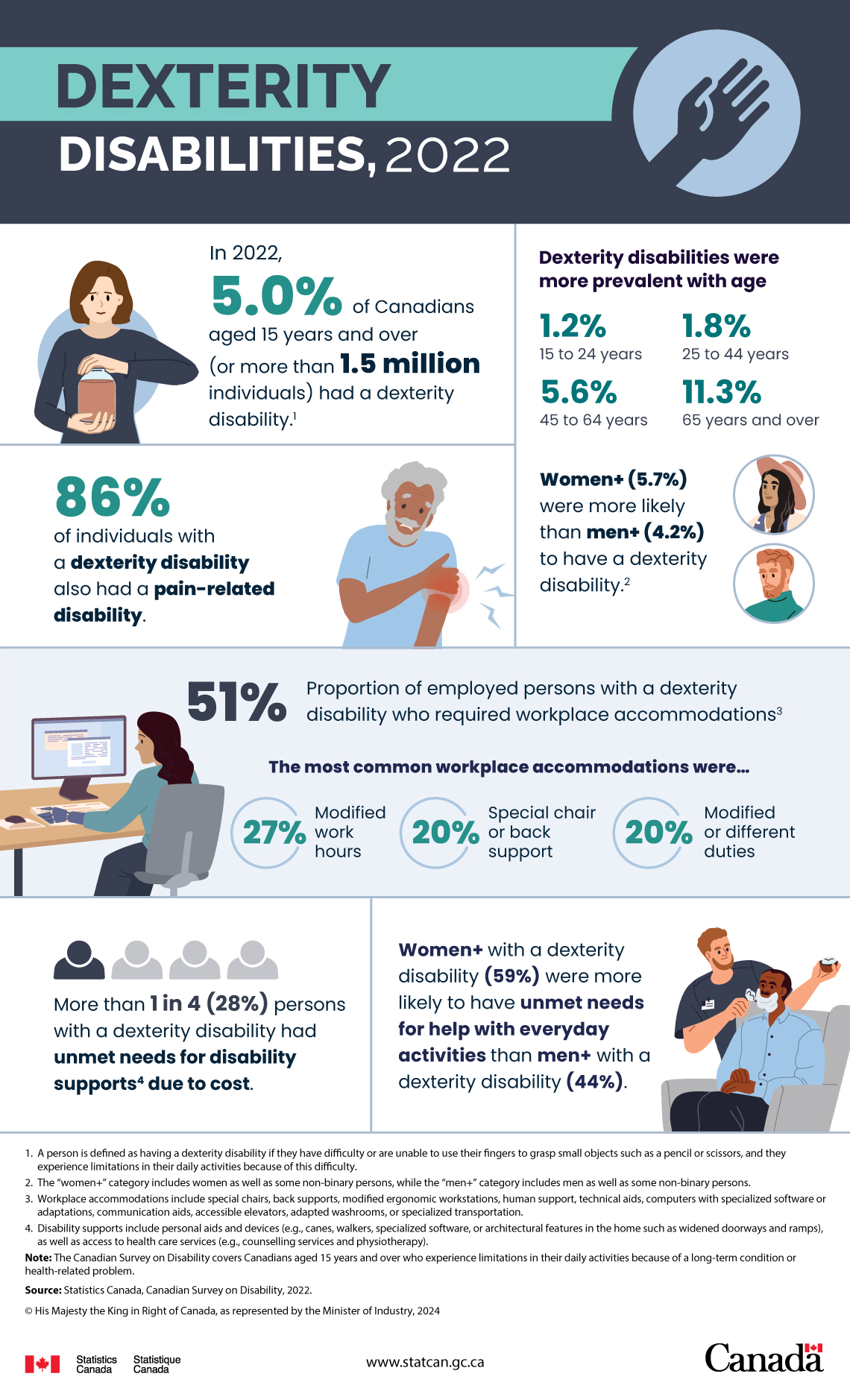
Utilizing data from the 2022 Canadian Survey on Disability, this infographic highlights the trends and experiences of persons with dexterity disabilities. This release is part of a series of infographics that focus on specific disability types.

Description - Dexterity disabilities, 2022
In 2022, 5.0% of Canadians aged 15 years and over (or more than 1.5 million individuals) had a dexterity disability.1
Dexterity disabilities were more prevalent with age:
- 15 to 24 years: 1.2%
- 25 to 44 years: 1.8%
- 45 to 64 years: 5.6%
- 65 years and over: 11.3%
Women+ (5.7%) were more likely than men+ (4.2%) to have a dexterity disability.2
86% of individuals with a dexterity disability who also had a pain-related disability.
51%: Proportion of employed persons with a dexterity disability who required workplace accommodations.3
- The most common workplace accommodations were…
- Modified work hours (27%)
- Special chair or back support (20%)
- Modified or different duties (20%)
More than 1 in 4 (28%) persons with a dexterity disability had unmet needs for disability supports4 due to cost.
Women+ with a dexterity disability (59%) were more likely to have unmet needs for help with everyday activities than men+ with a dexterity disability (44%).
Note: The Canadian Survey on Disability covers Canadians aged 15 years and over who experience limitations in their daily activities because of a long-term condition or health-related problem.
Source: Statistics Canada, Canadian Survey on Disability, 2022.
Notes
1 A person is defined as having a dexterity disability if they have difficulty or are unable to use their fingers to grasp small objects such as a pencil or scissors, and they experience limitations in their daily activities because of this difficulty.
2 The “women+” category includes women as well as some non-binary persons, while the “men+” category includes men as well as some non-binary persons.
3 Workplace accommodations include special chairs, back supports, modified ergonomic workstations, human support, technical aids, computers with specialized software or adaptations, communication aids, accessible elevators, adapted washrooms, or specialized transportation.
4 Disability supports include personal aids and devices (e.g., canes, walkers, specialized software, or architectural features in the home such as widened doorways and ramps), as well as access to health care services (e.g., counselling services and physiotherapy).
Contact information
For more information, or to enquire about the concepts, methods or data quality of this release, contact us (toll-free 1-800-263-1136; 514-283-8300; infostats@statcan.gc.ca) or Media Relations (statcan.mediahotline-ligneinfomedias.statcan@statcan.gc.ca).